Art World
Carrie Mae Weems’s Convention of Artists and Intellectuals in New York Inspired Hope for Our Violent Times
Theaster Gates, Shirin Neshat, Tania Bruguera and others met at the Park Avenue Armory for a day of art and discussion.
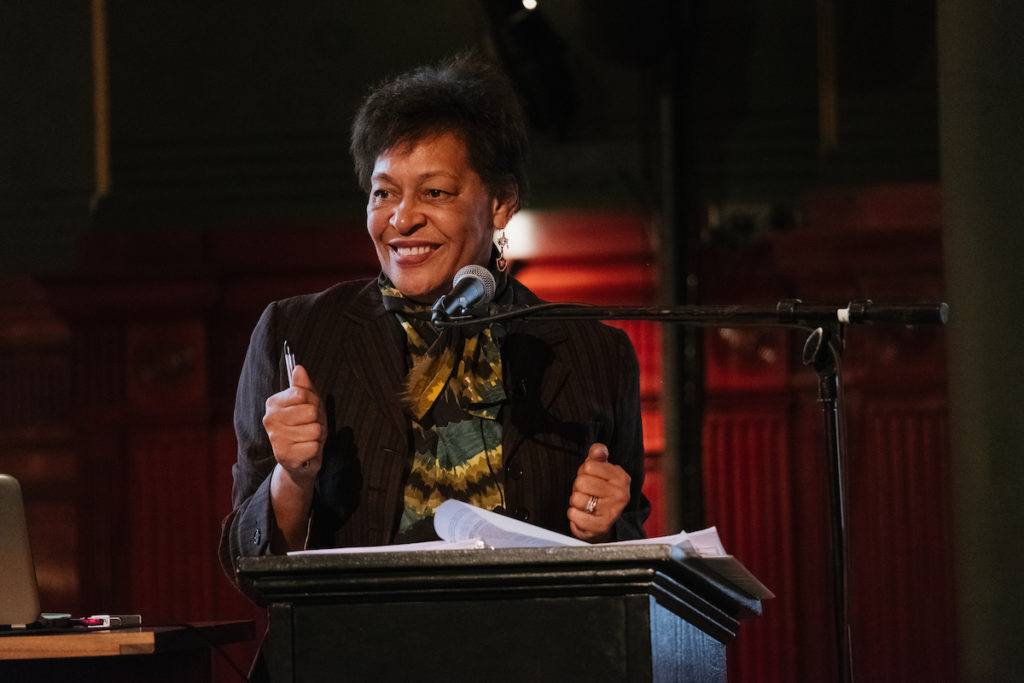
Theaster Gates, Shirin Neshat, Tania Bruguera and others met at the Park Avenue Armory for a day of art and discussion.

Jazia Hammoudi

Carrie Mae Weems ended her year-long residency at the Park Avenue Armory on Sunday by asking a group of like-minded artists, scholars, and creators to spend the day contemplating violence and healing. She called the 10-hour event “The Shape of Things,” taken from the title of a 1993 photograph she took in Mali.
The impressive Gilded-age space is itself saturated with symbols that glorify 19th-century state-sanctioned violence, serving as a powerful backdrop for an event where most presentations addressed crimes against black and brown bodies.
“The Shape of Things” felt more like an open university than a platform to advance a specific sociopolitical agenda. In her introductory remarks, Weems set the stage for the day’s proceedings with a series of questions: “How do you characterize violence?”; “How can artists continue to work in the current climate?”; “With terror pressing on us from so many angles, how do you maintain hope?”
Hank Willis Thomas, Theaster Gates, Shirin Neshat, and others participated in the program of talks, readings, performances, and screening. Poet and activist Aja Monet was one of the few participatnts who referenced global contexts of oppression and solidarity. In one of the most powerful juxtapositions of the day, Monet read her poem for Palestine, “The Giving Tree,” while standing beneath a relief of an eagle attacking a dragon—a symbol for Eastern enemies.
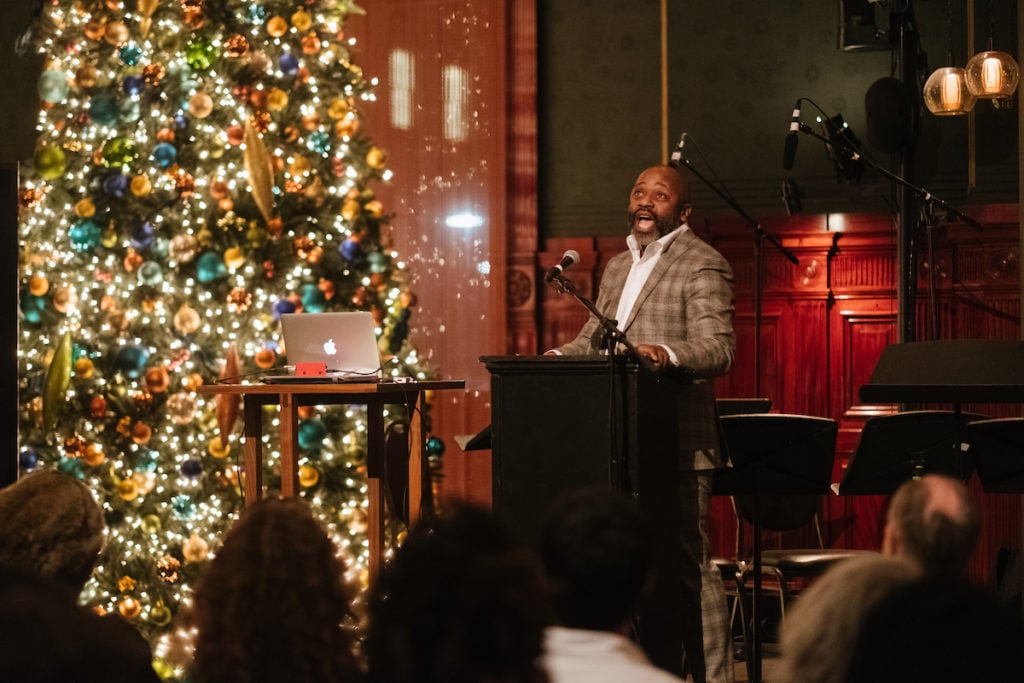
Theaster Gates, courtesy of Da Ping Luo.
Performance artists Carmelita Tropicana and Brandon Jacobs-Jenkins dressed in their best Walt Whitman drag to recite “Leaves of Grass,” and at one point ran through the halls of the Armory. In another highlight, puppeteer Basil Twist performed excerpts from his and Lee Nagrin’s environmental theater piece Behind the Lid, which involved the melancholy calisthenics of his puppet moving up and down the grand staircase.
Tania Bruguera, who seems to be everywhere this year, installed a Nkisi Nkonde—a Congolese power figure—in an upstairs rifle room, and asked people to write their political wish on a card and attach it to the sculpture’s body. Recalling Yoko Ono’s Wish Tree (1981) and recontextualizing Bruguera’s own 1998 work Displacement, the artist explained that the current iteration “serves as a reminder that the US has become what it criticized.” Bruguera also performed, taking the stage to read all of Trump’s tweets from the last year. Alongside the radical hopefulness of the Nkisi figure, this performance felt somewhat flat and sad.
Other strong moments included visual anthropologist Arthur Jaffa’s powerful video piece on police brutality, played over a Beyoncé soundtrack; a discussion of video games and empathy from the creators at Ink Stories; and a presentation on art and revolution in Iran and Egypt by artist Shirin Neshat.
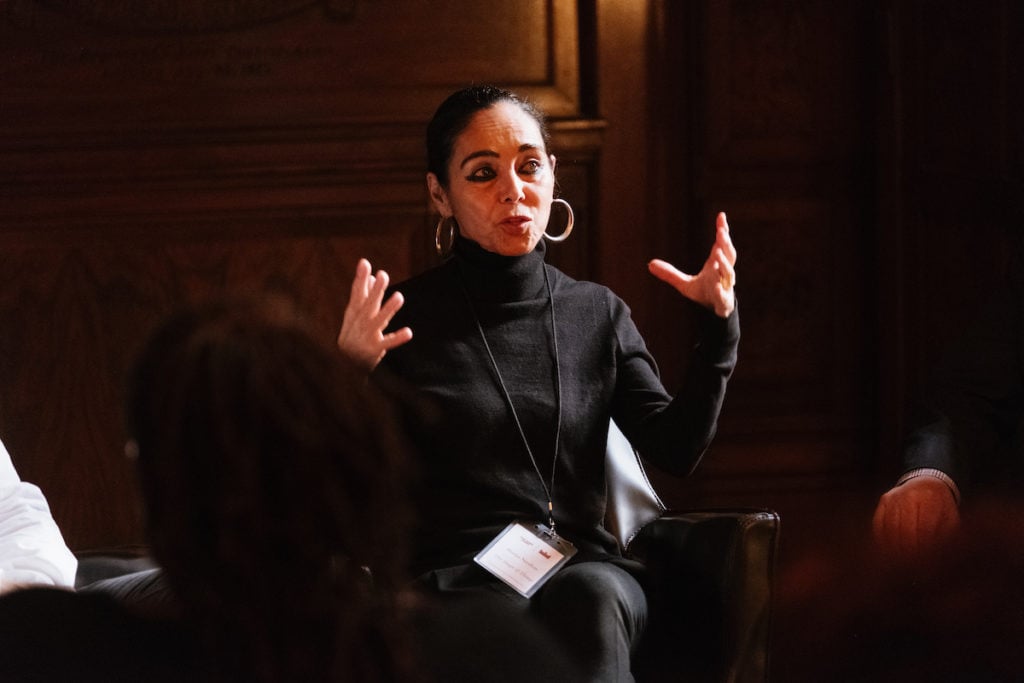
Shirin Neshat, courtesy of Da Ping Luo.
While much of the subject matter was somber and the discussions serious, the most transcendent moments were those that sparked joy. Choreographer and Flexn dance pioneer Reggie Gray (aka Regg Roc) spent the day leading a workshop with his company The D.R.E.A.M. RING (Dance Rules Everything Around Me), a group that hopes to inspire social change through dance culture. Mostly attended by teenagers, the workshop was the happiest event of the whole affair.
At one point, Gray began “flexn” and “pauzn” to a remix of gunshots sounds. Smiling and dancing over an AK47 beat, Gray silently answered Weems’s question—this is how we maintain hope.
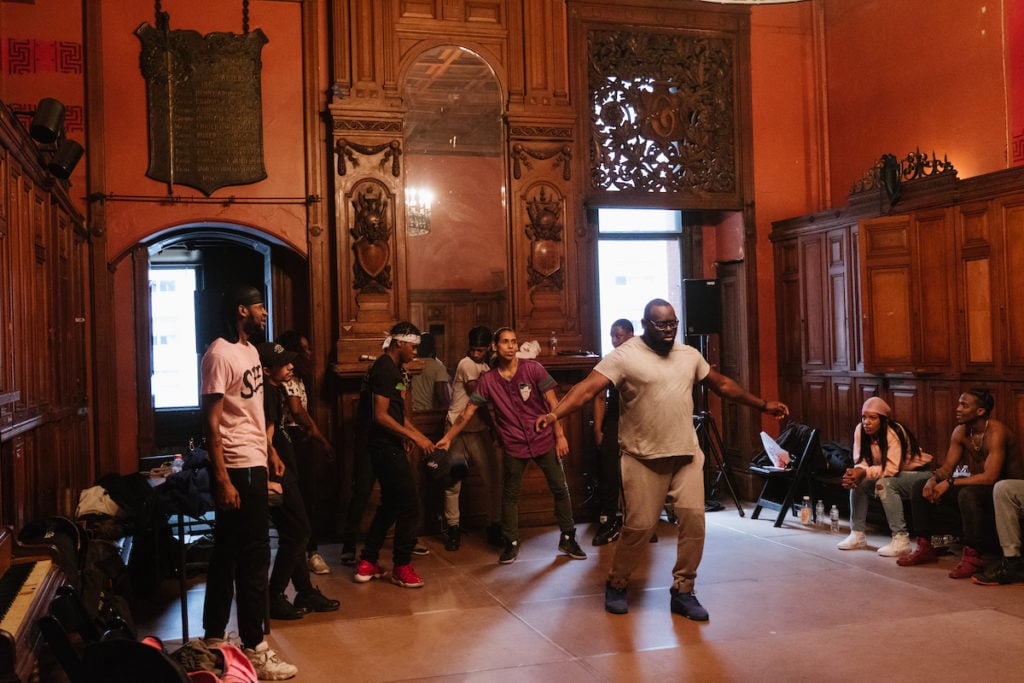
D.R.E.A.M. Ring, courtesy of Da Ping, Luo.
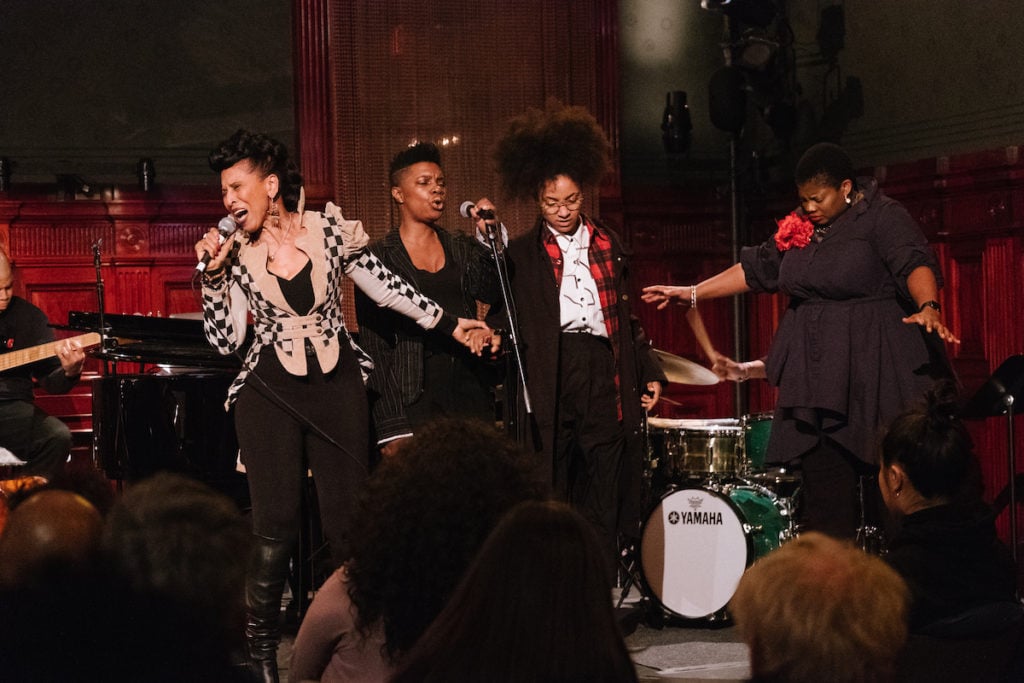
Nona Hendryx, Kiki Hawkins, Esperanza Spalding, and Asa Arnold. Courtesy of Da Ping Luo.